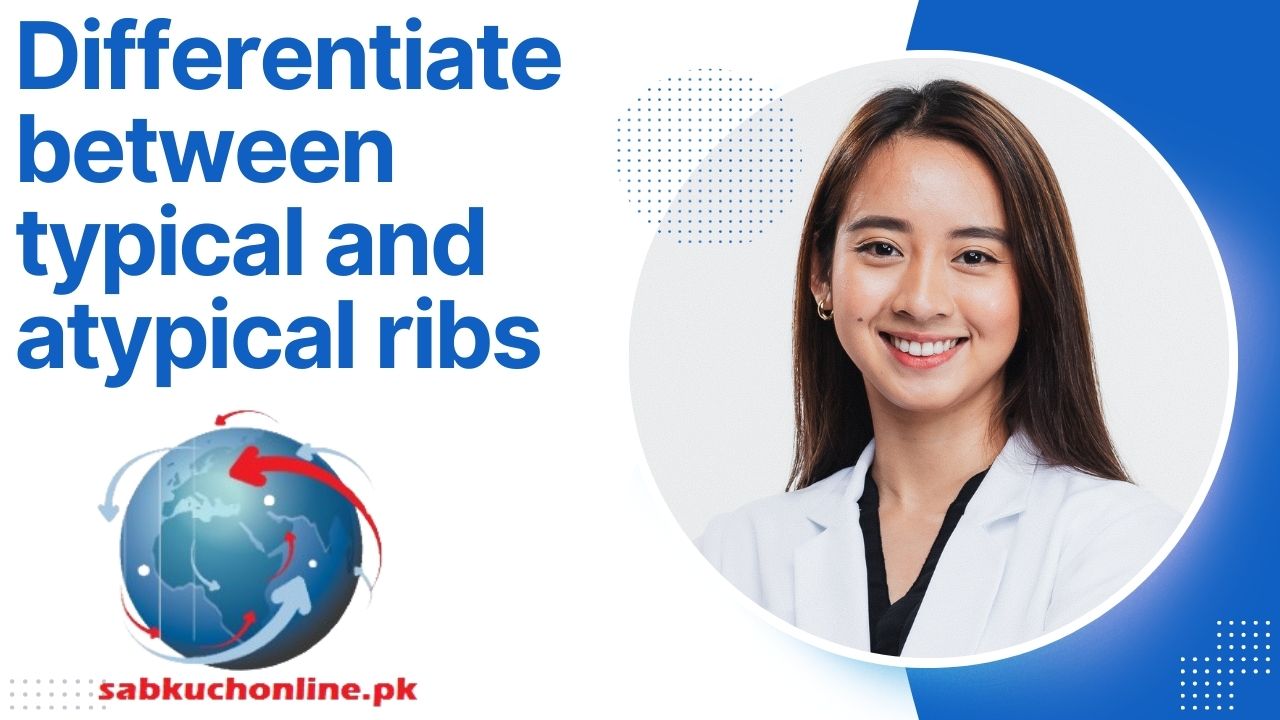Typical Ribs vs. Atypical Ribs:
Typical Ribs (3-9):
- Head:
- Articulates with two facets on the bodies of adjacent thoracic vertebrae.
- Neck:
- A constricted region between the head and the tubercle.
- Tubercle:
- Articulates with the transverse process of the corresponding thoracic vertebra.
- Shaft (Body):
- The main, curved portion of the rib.
- Supports the intercostal spaces and provides structural integrity to the thoracic cage.
- Costal Angle:
- The point where the rib begins to curve anteriorly.
- Costal Groove:
- Located on the inferior border.
- Houses the intercostal vessels and nerve.
Atypical Ribs:
- First Rib:
- Shortest and broadest.
- Has a single facet on the head for articulation with the first thoracic vertebra.
- Tubercle articulates with the transverse process of the first thoracic vertebra.
- No costal angle.
- Second Rib:
- Articulates with the second thoracic vertebra.
- No costal angle.
- Eleventh and Twelfth Ribs (Floating Ribs):
- Shorter with no neck or tubercle.
- Articulate only with their corresponding thoracic vertebrae.
- Lack a costal angle and do not attach to the sternum or costal cartilage.
Important Bony Landmarks of Thoracic Vertebrae:
- Body (Vertebral Body):
- Larger and heart-shaped.
- Supports the weight of the thoracic cage.
- Vertebral Arch:
- Surrounds and protects the spinal cord.
- Formed by the pedicles and laminae.
- Spinous Process:
- Projects posteriorly.
- Site for muscle and ligament attachments.
- Transverse Processes:
- Extend laterally.
- Articulate with the ribs, forming costovertebral joints.
- Superior and Inferior Articular Processes:
- Form facet joints with adjacent vertebrae.
- Facilitate movement and stability of the spine.
- Costal Facets:
- Located on the body and transverse processes.
- Articulate with the ribs.
- Thoracic Vertebral Foramina:
- Enclose and protect the spinal cord.
- Inferiorly Directed Spinous Process:
- Contributes to the downward slope of the thoracic spine.
- Costovertebral Joints:
- Articulation between the head of the rib and the costal facets of the corresponding thoracic vertebra.
- Costotransverse Joints:
- Articulation between the tubercle of the rib and the transverse process of the corresponding thoracic vertebra.
- Costosternal Joints:
- Articulation between the costal cartilage of true ribs and the sternum.
Understanding these landmarks is crucial for medical professionals in assessing and diagnosing conditions affecting the thoracic region, including rib abnormalities and spinal disorders.
